Neil Plimmer • 13 March 2018
The Wellington Sculpture Trust’s New Zealand Festival commission, Other Worlds by Ruth Watson, opened in late February at the 4 Plinths site just outside Te Papa. Wellington Sculpture Trustee Neil Plimmer discusses the artwork with the artist.
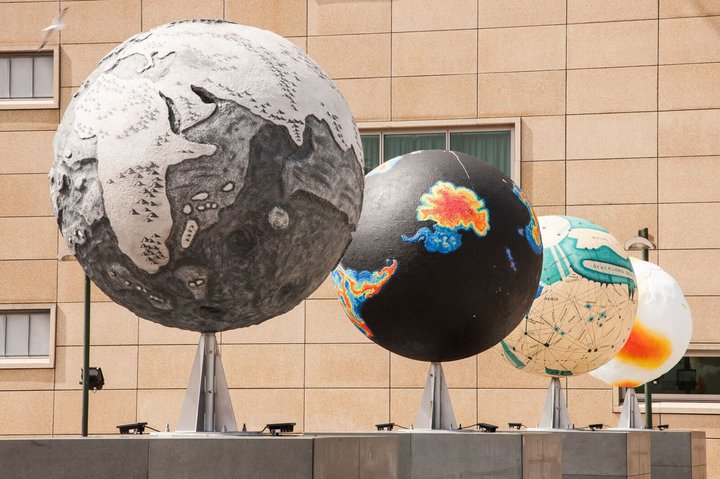
Created by Auckland-based Ruth Watson, and commissioned by the Wellington Sculpture Trust, each of Watson's globes is a dramatic reinterpretation of Earth or Mars based on early or unusual maps of the planets. This is the sixth public sculpture the Trust has commissioned at the 4 Plinths.
What was your immediate reaction to the invitation to submit a proposal? Did the 4 Plinths look a great site for a new work – or a tough challenge?
When the call for proposals went out, I could immediately see something on those plinths – globes. I had been thinking about making a large globe for some time and this project gave it a focus. So I had a very positive response to the site. What the globes might actually become took some time, as I worked through the first round proposal.
Did the proposal you came up with draw heavily on your previous body of work or was it a new direction?
Conceptually it’s an evolution: I’ve long been interested in presenting worlds, through maps and other visual means, in ways that are unfamiliar to most people. I do this to break from conventional perspectives, to reinvigorate our relationship with the way the world is often depicted. But in practical terms the project has many new directions – the large scale of the work, and the challenges of fabricating such pieces, and of course the specific, shaped globes.
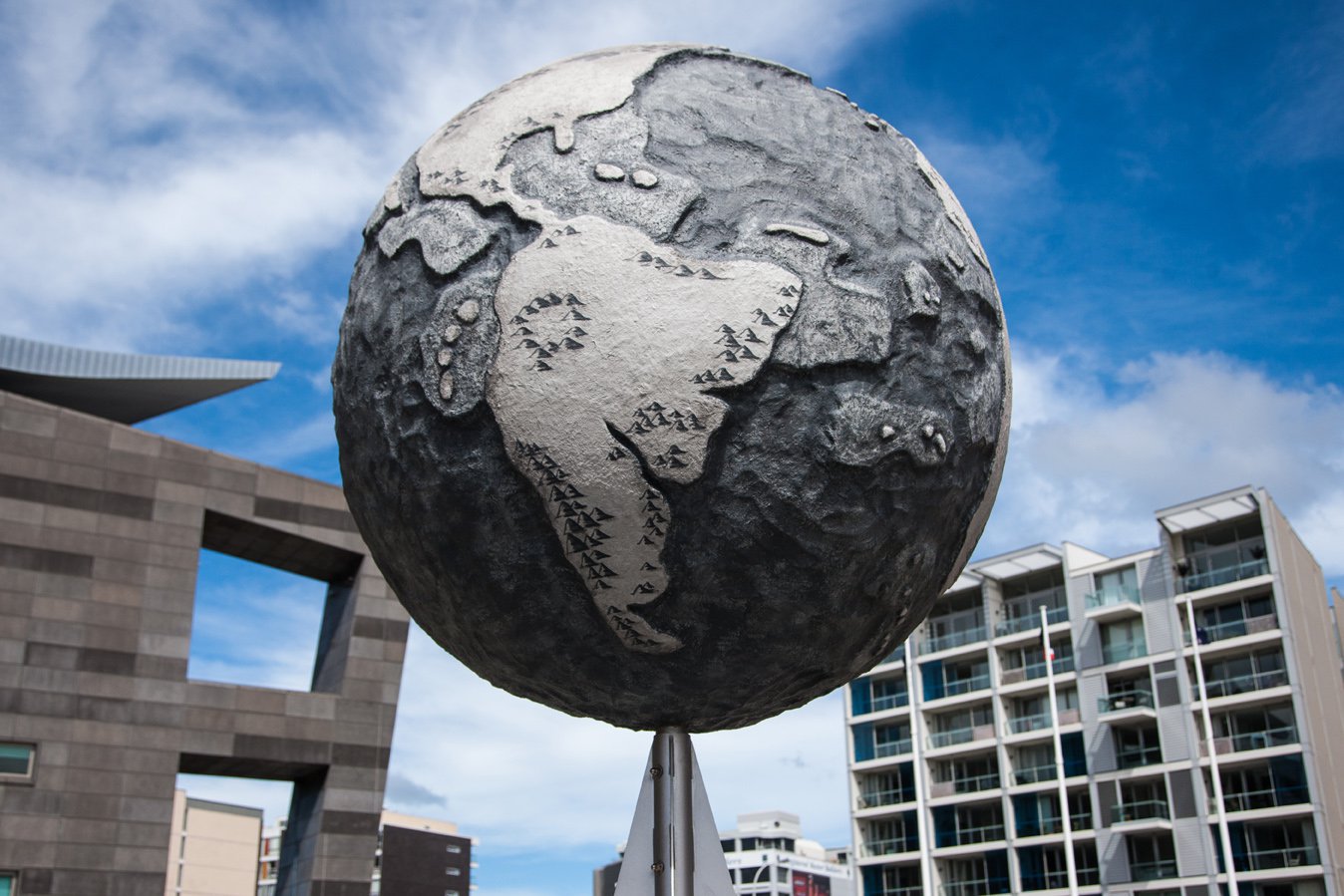
Image: Matt Grace
Can you tell us what the four globes represent?
There are ambiguous elements to each final choice and I like the viewer to form interpretations of their own rather than my telling them what to think. Having said that, the starting point for one globe was a 17th-century view of Earth without water. Another had a start point of satellite data of the Earth’s gravitational fields, exaggerated, producing a very oddly shaped geoid. The third draws on global carbon emission data. And the fourth is a view of Mars, based on the early 20th-century view of Mars crossed with canals. So the globes have real sources but the final works aren’t just reproductions, if that makes sense.
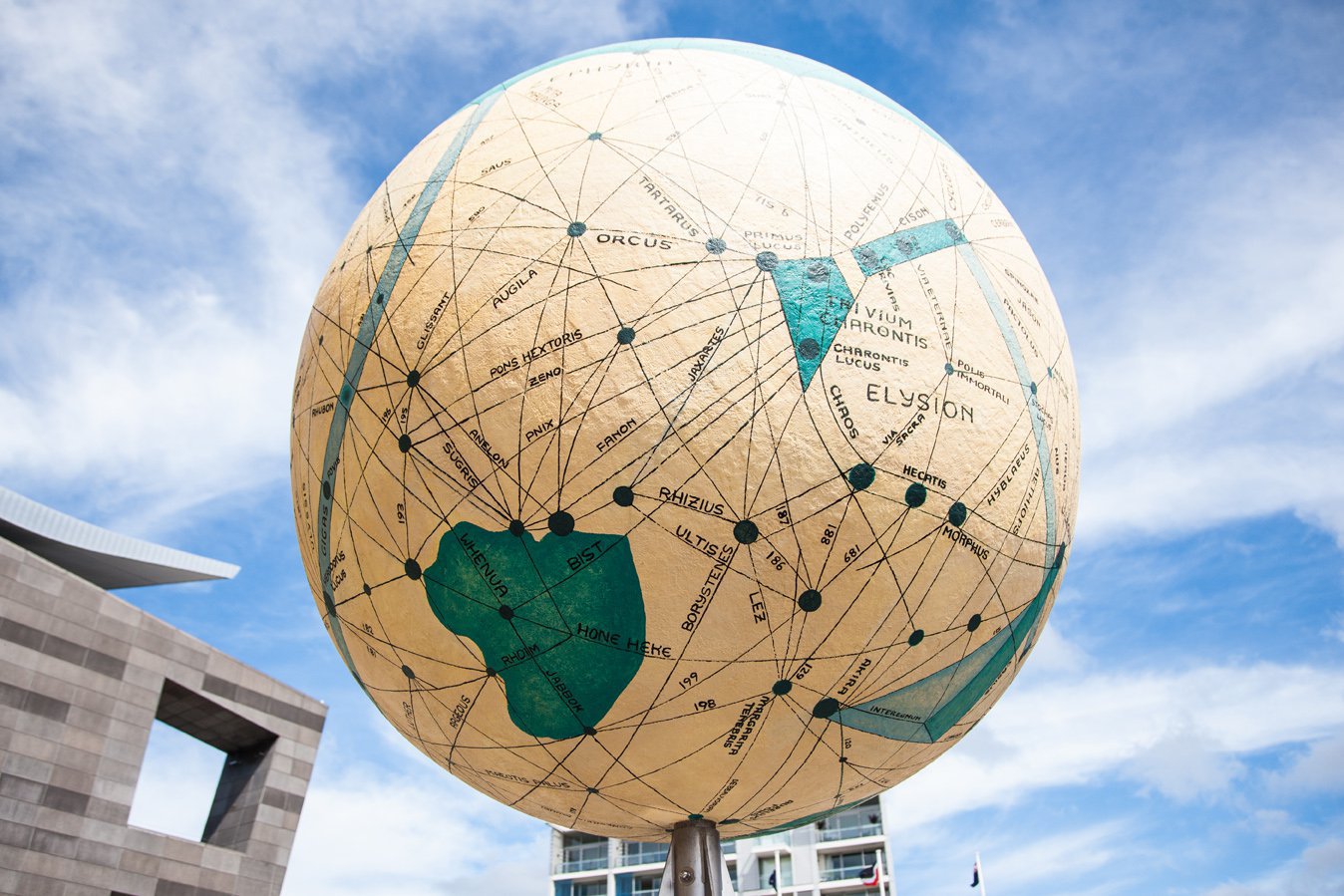
Image: Matt Grace
-“I like the viewer to form interpretations of their own rather than my telling them what to think”
Making the four globes must have been an engineering challenge given the severity of the exposed site, and the fact that they are expected to stay there for up to two years. What did you make them out of?
The inside is polystyrene reinforced with a steel frame. The exterior is a concrete and fibreglass mix. Then there is the painted, visible surface. I am pretty sure it will withstand the rigours of the site.
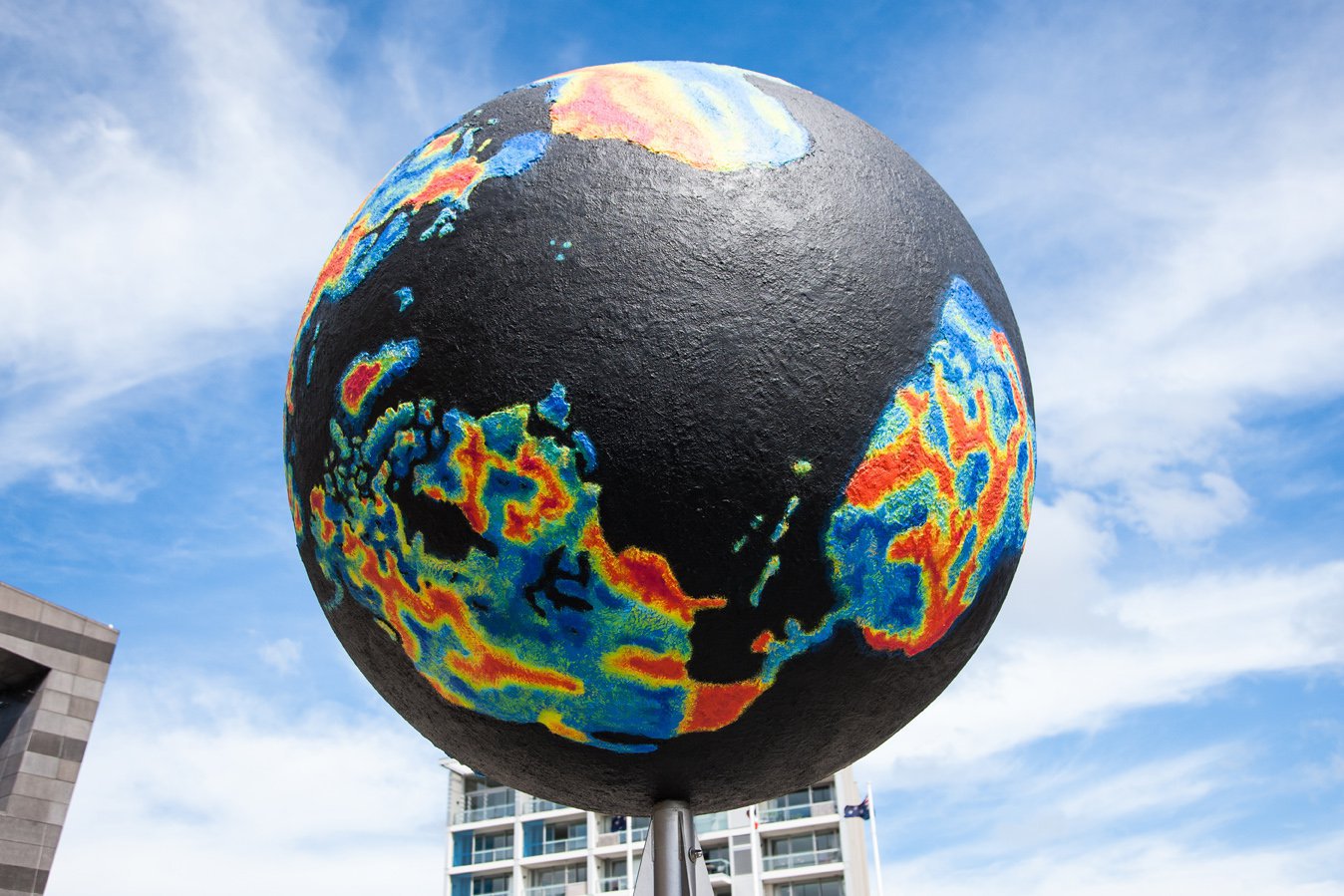
Image: Matt Grace
The Trust was delighted to receive your submission and select it for the award. We hope you too have enjoyed the project.
Well I have, but I can say it was more demanding than I had predicted! However I agree with you that it is great to see it finished and installed at the site.
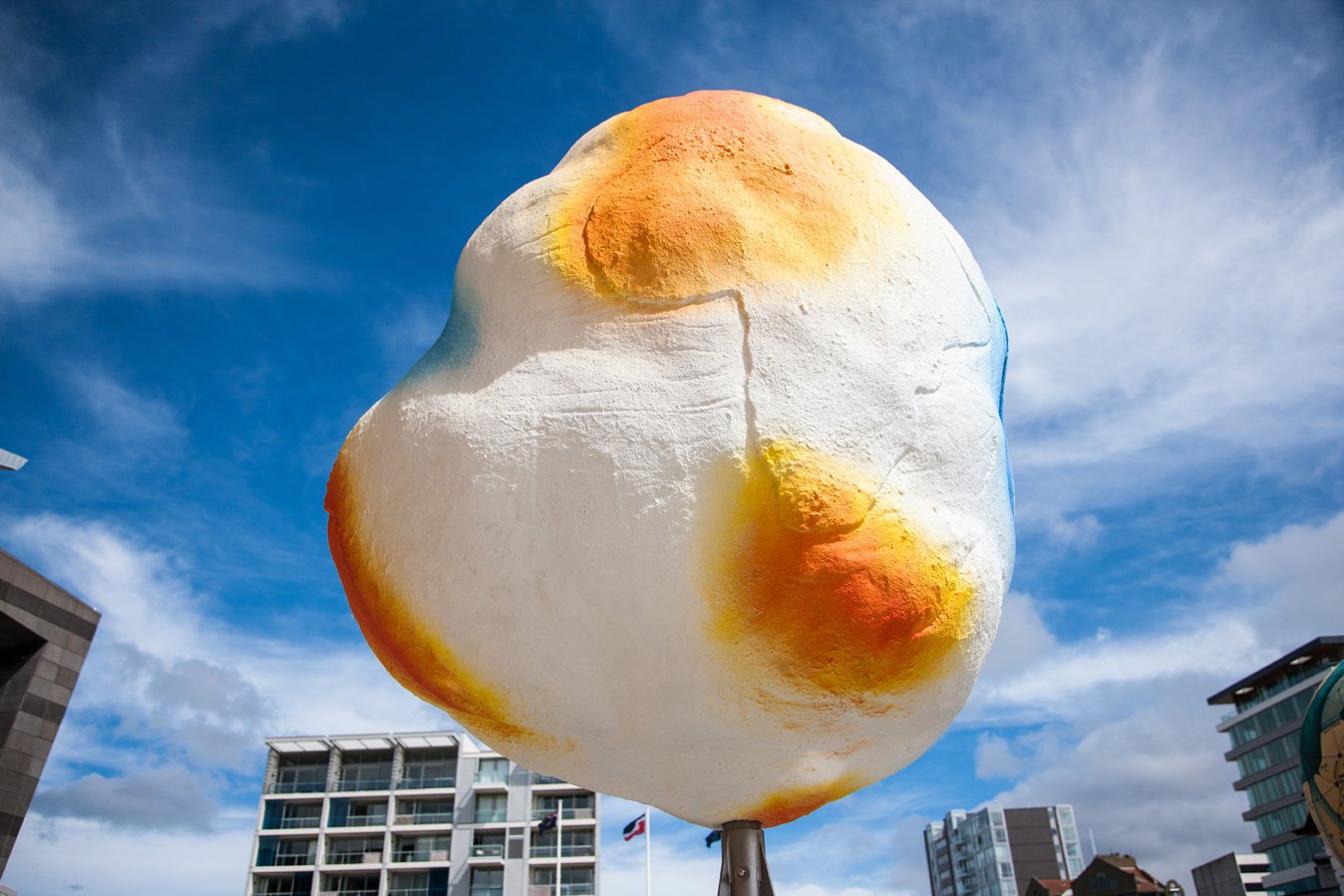
Image: Matt Grace
Neil is a Trustee at The Wellington Sculpture Trust and serves on the boards of the Arts Foundation and the New Zealand Art Show/Affordable Arts Trust.


